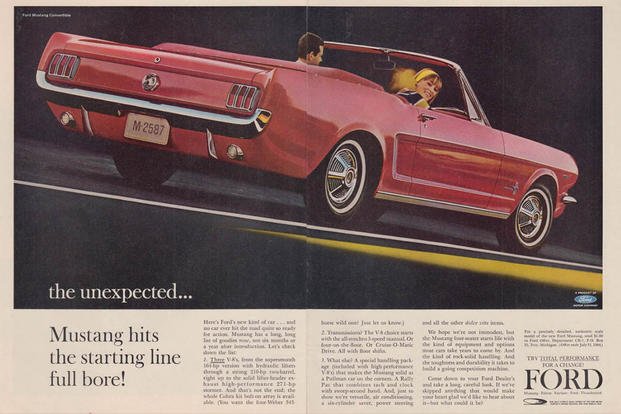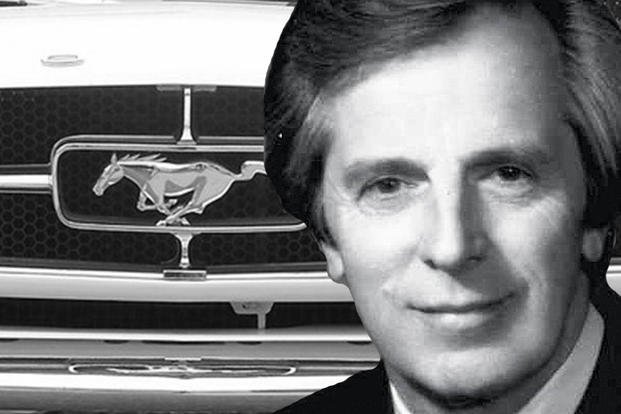Whether you’re a junior enlisted service member buying your first Mustang at 25% APR or you have a minivan to get your kids where they need to be, you can thank Hal Sperlich.
Harold K. “Hal” Sperlich is widely regarded as “the most influential auto executive you barely know,” because he played such a critical role in developing some of the automotive industry’s biggest winners. For some 40 years, he would help shape and reshape the American auto industry (and save one of its iconic brands) while creating some of the most memorable and best-selling models ever to come out of Detroit.
Sperlich died on Jan. 20, 2025, at the age of 95.
In 1960, Ford Motor Company’s market research revealed the potential demand for an affordable but stylish car designed for the Boomer generation. Executives were wary of this kind of research; it was the same market that led to the disastrous and costly Edsel failure of the late 1950s.
It was a time when Americans wanted either the luxury Thunderbird or the affordable Falcon, and legendary executive Lee Iacocca was about to take another massive gamble on another midrange vehicle, one with a flair of distinguished style. To create what he called the “poor man’s T-bird,” Iacocca tapped Ford’s most valuable resource: Sperlich, at the time the company’s manager of special studies in product planning.
Sperlich was a Michigan native, a trained mechanical and industrial engineer who cut his teeth at Alcoa Aluminum and then deployed with the U.S. Navy Construction Battalions (better known as the “Seabees”) in the Korean War. Sperlich landed a job at Ford in 1957 as a product planner.
When Iacocca got the green light from Henry Ford II to create a car that would target the coming-of-age youth market, Sperlich’s team would cut up a Falcon and add the best parts of the Thunderbird and Lincoln Mark II to create what became the most popular and (perhaps) iconic classic car of all time: the Ford Mustang.

“We found a way to make a comfortable car for a couple and two kids, with a good trunk,” Sperlich recalled in a 2013 interview with MotorTrend. “The goal was an attractive, well-equipped, low-price family car to get us volume. Back then, if you wanted something nice, sporty, even luxurious, it had to be large, expensive, or both. There was no such thing as small-nice or small-sporty available to this new market.”
The Mustang sold 400,000 units in its first year on the market in 1964 and set a record for the fastest-selling car in American automotive history to that date. Later, in 1976, Sperlich turned out the Fiesta, Ford’s first front-wheel-drive compact vehicle.
But the project Sperlich really wanted to tackle was a low-cost, front-wheel-drive van that could fit in a garage, an idea that would eventually become the minivan. Sperlich pitched the idea aggressively, as did Iacocca, but Henry Ford wasn’t buying it. Sperlich left Ford for Chrysler in 1977, and Iacocca joined him less than two years later.
In the 1970s, consumer demand and government regulation for more efficient cars hit Chrysler hard. The company also had a reputation for poor reliability, which threatened to take the automaker down entirely. With the help of the U.S. government, Iacocca helped bring the company back to solvency while Sperlich developed his minivan concept.
“We had two oil crises in the ’70s, and people were going nuts for fuel economy,” Sperlich told MotorTrend. “So we said, let’s do new front-drive compacts based on a stretched Omni/Horizon platform, but with good proportions, a good stance, and great fuel economy, to turn this company around.”
Sperlich’s first big success at Chrysler was the new platform he described, which became the K-car. It debuted in 1981 and was a total switch from many of the company’s 1970s components. Most importantly, before the K-car, many Chrysler makes and models couldn’t share parts, which was a major contributor to its previous financial losses. The K-car made Chrysler profitable once again, saving the company. Meanwhile, Sperlich finished developing his minivan, and in 1984, the Dodge Caravan and Plymouth Voyager turned a previously nonexistent vehicle into a major sales category.

The creator of the “ponycar” Mustang and minivan retired in 1989, then president of Chrysler Motors. He was inducted into the Automotive Hall of Fame in 2009, remembered as a visionary, challenging today’s companies to innovate.
“Nobody is innovating, creating new segments,” Sperlich told MotorTrend. “Look at my history: Mustang, never done before. Fuel-efficient front-drive cars for America, never done. Minivans, never done. It was going outside of the rearview-mirror segments. A lot of new niches are possible. You could do a Mustang-type car again and have a car young people would love to have.”
Want to Know More About Veteran Jobs?
Be sure to get the latest news about post-military careers as well as critical info about veteran jobs and all the benefits of service. Subscribe to Military.com and receive customized updates delivered straight to your inbox.
Story Continues
Read the full article here





